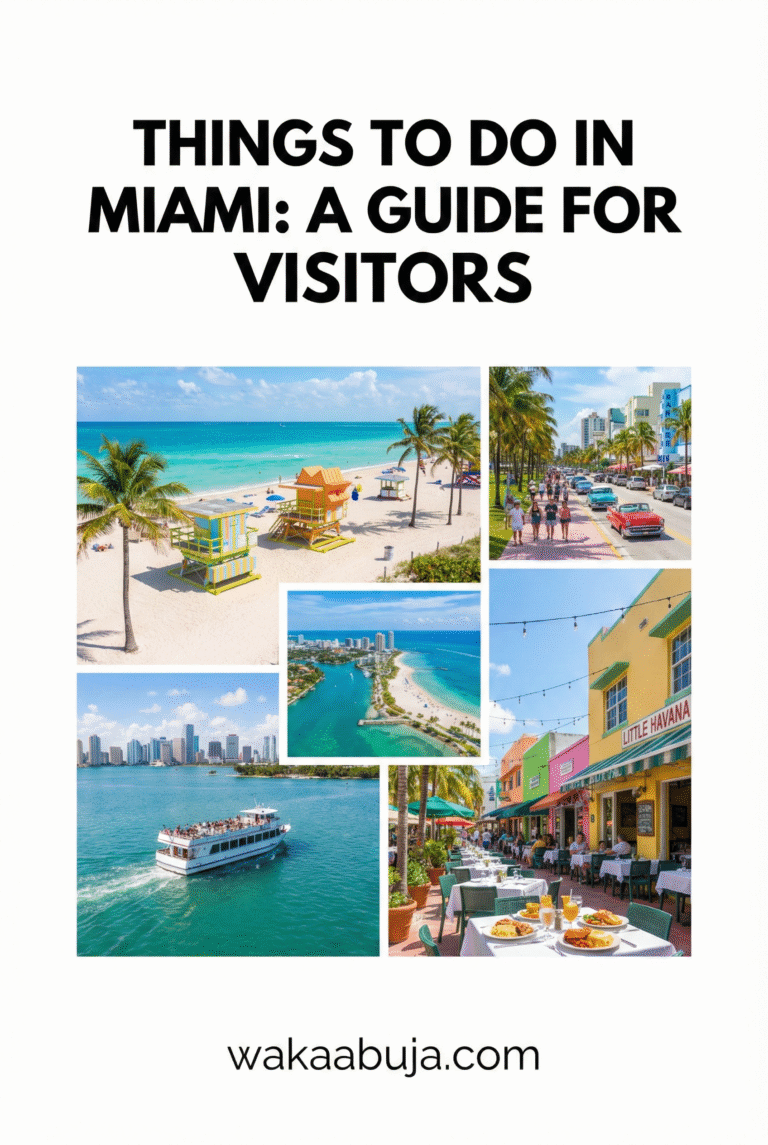Whether you plan a short trip or an extended stay, this guide is crafted from real-world insights to maximize your enjoyment and ease your travel planning.
Why Italy Should Be Your Next Travel Destination
Italy is a travel dream with its rich tapestry of history, art, culture, culinary delights, and breathtaking landscapes. From the ancient ruins of Rome to the romantic gondolas of Venice, and from the rolling hills of Tuscany to the stunning Amalfi Coast, Italy offers experiences that captivate every traveler. What sets Italy apart is not just its iconic landmarks but the vibrant local culture woven into every meal, piazza, and alleyway.
My personal journey through Italy revealed hidden gems in smaller towns and unforgettable food moments that only locals usually enjoy—this guide brings those insider secrets to you.
When to Visit Italy for the Best Experience
The best times to visit Italy are spring (April to May) and early autumn (September to October), when the weather is pleasantly mild, prices are reasonable, and crowds are thinner. Avoid the peak summer months of July and August if you prefer cooler temperatures and calmer sightseeing days. However, summer remains perfect for beach lovers and festival-goers despite the heat.
Traveling during shoulder seasons also means better opportunities for wine tastings during harvest time in Tuscany and fewer tourists clogging up Rome or Florence’s famed sites.
How to Get to Italy and Navigate Around
Italy is well connected by international airports in major cities such as Rome (Fiumicino), Milan (Malpensa), Venice (Marco Polo), and Naples. Many visitors arrive by plane, but Italy is also accessible by train from neighboring countries and ferries to islands like Sardinia and Sicily.
Once inside Italy, the train network is excellent for moving between cities efficiently and comfortably. The high-speed trains connect Rome, Florence, Milan, and Venice in just a few hours. For exploring the countryside or less accessible coastal areas, renting a car can be a great option, offering flexibility to discover off-the-beaten-path locations.
Must-See Places and Activities
Italy brims with iconic attractions and authentic experiences that create lasting memories. My top recommended sights include:
- The Colosseum and Vatican City in Rome—historic and spiritual powerhouses with incredible architecture.
- Florence’s Renaissance art scene and the Duomo, plus scenic strolls along the Ponte Vecchio.
- Venice’s canals and hidden alleyways—explore beyond tourist hubs for quiet charm.
- Tuscany’s rolling hills, vineyards, and medieval towns like Siena and San Gimignano.
- The Amalfi Coast’s breathtaking cliffs and picturesque seaside villages make for an unforgettable coastal escape.
- Cinque Terre’s colorful cliffside villages and hiking paths overlooking the Ligurian Sea.
Beyond sightseeing, indulge in Italy’s culinary treasures: try authentic pasta from small trattorias, sample gelato made fresh daily, and embrace the aperitivo culture with locals.
Where to Stay: Choosing Your Home Base
Italy offers accommodation for every taste and budget—from luxury hotels and romantic boutique stays to cozy guesthouses and budget hostels. I found that staying in centrally located areas near public transportation and iconic sights made a huge difference in maximizing time.
For a more immersive experience, consider agriturismos in Tuscany or seaside villas along the Amalfi Coast. Booking platforms like Booking.com and Airbnb provide transparent ratings and reviews from previous travelers.
Typical Costs & Suggested Budgets for Italy Trips
Budgeting for an Italy trip varies widely based on travel style, duration, and destinations. Here’s a quick overview:
Approx. $1,200–1,800 per week per person
Includes hostels, dining at casual eateries, public transport, and discounted attraction tickets.
Approx. $2,500–3,500 per week per person
Comfortable hotels, a mix of dining out, guided tours, and some private transfers.
Starts around $5,000+ per week per person
Includes high-end hotels, fine dining, private tours, and exclusive experiences.
Advance planning and booking can save money, especially for flights and accommodations during peak seasons.
Money-Saving Tips While Traveling in Italy
From my travels, these tips helped keep expenses manageable without sacrificing experience quality:
- Book train tickets early online for discounted fares via official sites like Trenitalia.
- Enjoy local markets for fresh meals or picnic supplies instead of dining out every meal.
- Use city tourist passes that bundle museum entries and public transportation.
- Travel outside major holidays and weekends to avoid surcharges on transport and hotels.
- Consider staying in smaller towns near major cities for lower accommodation costs.
Getting Around Italy: Transportation Overview
Italy’s transportation system is efficient and diverse:
- Trains: Fast and comfortable for intercity travel, especially between major metropolitan areas.
- Buses: Useful in rural or regional areas not served by trains.
- Car Rentals: Ideal for exploring the countryside and smaller villages on your own schedule.
- Local Public Transport: Buses, trams, and metro systems exist in larger cities like Rome, Milan, and Naples.
How to Stay Safe While Exploring Italy
Italy is generally safe for tourists, but standard precautions apply.
- Watch out for pickpocketing in crowded tourist hotspots, on public transport, and in busy squares. Using a money belt or anti-theft bag is wise.
- Use licensed taxis or reputable ride-share services and verify meters to avoid scams.
- Avoid accepting goods or services from unlicensed street vendors to steer clear of counterfeit goods or pressure sales.
- Keep digital and physical copies of important documents safe and separate from originals.
- Be aware of local laws such as fines for littering or eating in restricted historic areas.
Recommended Trip Length and Tours to Consider
For first-time visitors, I recommend 7-10 days to fully capture Italy’s highlights across a few key cities and surrounding areas, balancing landmark visits with local experiences.
Popular tours include:
- Guided walking tours of Rome’s historic center and Vatican City.
- Wine tours in Tuscany focusing on Chianti and local wineries.
- Boat tours along the Amalfi Coast to visit Positano and Capri.
- Food tours in Bologna or Naples, revealing authentic Italian cooking traditions.
- Day trips from Florence to Pisa, Siena, or Cinque Terre.
Local Insights: Pro Tips from My Travels
One insider tip is to enjoy dinner like Italians do—start dining after 7:30 PM and savor the leisurely experience without rushing. Embrace the aperitivo culture—a pre-dinner drink and small bites—as a social treat people don’t want to miss.
When visiting restaurants, leave leftovers behind; doggy bags are uncommon and not favored. Also, avoid ordering cappuccino after breakfast hours, as locals typically stick to espresso in the afternoon and evening.
Emergency Contacts and Important Numbers in Italy
- Emergency Services (Police, Fire, Medical): 112
- Tourist Police (Polizia Turistica): +39 06 8361922 (Rome Headquarters)
- Tourist Assistance Helpline: +39 06 66055
- Embassy Contacts: Check your country’s embassy website for details.
Pros and Cons of Traveling to Italy
- Rich cultural and historical heritage with world-class art and architecture.
- Delicious cuisine and wine with regional specialties.
- Efficient public transportation and well-connected regions.
- Warm, friendly locals open to cultural exchange.
- Stunning and diverse landscapes—from mountains and lakes to beaches and countryside.
- High tourist crowds at popular sites, especially in summer.
- Pickpocketing can be an issue in busy areas and on public transport.
- Some language barriers outside major cities (though English is common in tourist areas).
- Costs can rise sharply during peak seasons and in luxury spots.
Frequently Asked Questions About Traveling to Italy
What is the best month to visit Italy?
The best months are April, May, September, and October due to mild weather, fewer crowds, and lower prices. Spring highlights blooming landscapes, while autumn showcases the grape harvest festivals.
How safe is Italy for tourists?
Italy is generally safe for tourists. Exercising caution against pickpockets in crowded areas and using licensed transportation helps ensure a trouble-free visit.
What should I budget per day in Italy?
Budget travelers can spend around $60-$100 per day, mid-range travelers $150-$250, while luxury travelers should plan for $350+. Costs vary by location and travel style.
How long should I stay in Italy for a first visit?
A 7-10 day trip lets you visit multiple major cities at a comfortable pace, balancing sightseeing with genuine cultural experiences.
Is tipping customary in Italy?
Tipping is appreciated but not mandatory. Small change or rounding up bills in cafes and restaurants is common; leaving around 10% is a nice gesture in upscale establishments.




